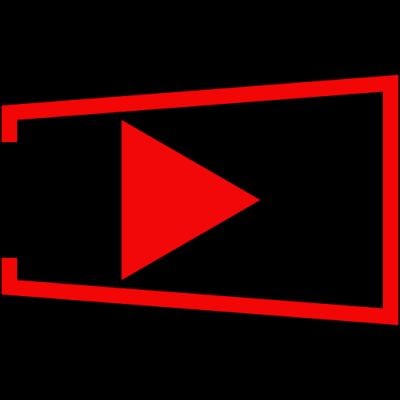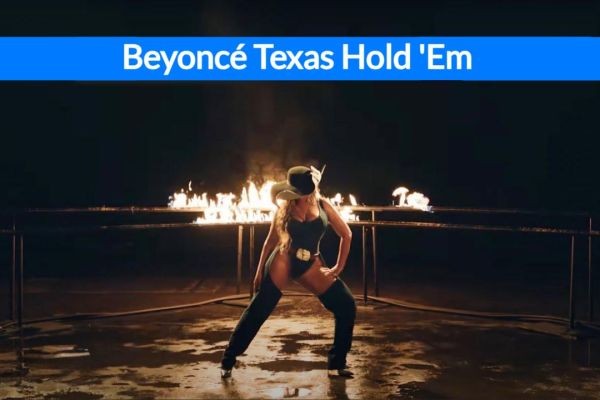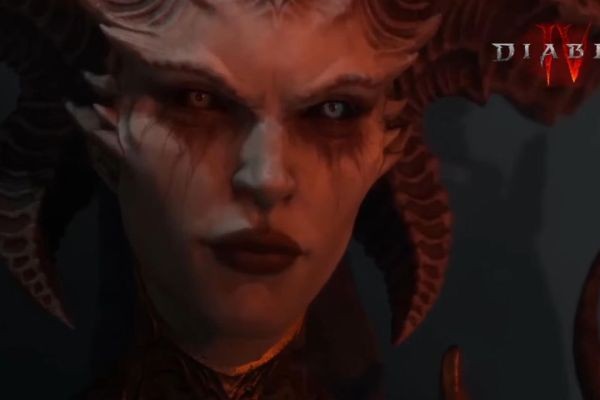Discover how keyframe animation, CGI, sand animation, and motion capture push the boundaries of visual storytelling. Learn more about these innovative techniques today.
08/15/24 • 184 Views
Animation techniques fundamentally sculpt your engagement with the art form. Traditional methods, like meticulous keyframe animation, establish a foundation, while advanced digital technologies, including CGI and motion capture, enhance realism and flexibility. Innovations like sand animation and paint on glass add unique textural dimensions that traditional or digital techniques alone cannot capture. Each technique not so much defines what animation is but expands the possibilities of what it can be, pushing the boundaries of visual and narrative storytelling. This ever-evolving palette of techniques enriches the medium, inviting exploration into its vibrant scope and complexity. Discover how these innovative methods are revolutionizing storytelling.
Key Takeaways
- Techniques such as keyframing and in-betweening establish the fluidity and realism in traditional animation.
- Digital tools like Autodesk Maya and Blender enable detailed 3D modeling and texturing in modern animation.
- Experimental styles like sand or pinscreen animation introduce unique textures and storytelling elements.
- Motion capture technology injects lifelike movements and expressions into digital characters, enhancing realism.
- The use of VR and AR in animation pushes the boundaries of immersive storytelling experiences.
Historical Evolution of Animation
Delving into the historical evolution of animation, you'll find that it extends well beyond the familiar confines of modern cinema, originating from centuries-old practices like puppetry and shadow plays. This rich heritage illuminates how traditional techniques have laid the groundwork for contemporary animation. The phénakisticope, introduced in 1833, marked a pivotal moment by employing spinning discs to create an illusion of motion, reflecting the nascent phase of animation's evolution.
As you explore further, the use of the projecting praxinoscope in 1882 showcases an innovative leap, enhancing the phénakisticope's basic concept by integrating mirrors to project animated sequences. This progression not only captivated audiences but also set a foundational framework for subsequent methods. Moving forward, Eadweard Muybridge's motion picture experiments further dissected motion, underpinning the scientific approach to animating life.
Stop motion and claymation emerged as significant milestones, illustrating the versatility and enduring appeal of animation. These techniques, epitomized in films like 'King Kong,' utilized frame-by-frame manipulation of physical models to breathe life into inanimate objects, merging historical practices with modern storytelling. This intricate blend underscores the continuous evolution and expansion of animation, demonstrating its profound capacity to adapt and enchant.
Traditional Animation Techniques
Classic animation, epitomized by Disney's early masterpieces like Snow White and Bambi, involves the meticulous hand-drawing of each frame to craft motion sequences. This approach, fundamental to classic animation techniques, showcases the profound attention to detail and the expertise of skilled animators. Each frame is a tribute to the labor-intensive process that characterizes classical 2D animation.
Here's how this technique unfolds:
- Creation of Keyframes: Skilled animators begin by drawing keyframes that capture the critical positions of characters throughout a scene. These frames serve as the anchor points for the motion sequences.
- Inbetweening: Artists then draw the intermediate frames (in-betweens) that fill the gaps between keyframes, ensuring a fluid progression and continuity in movement. This step is essential for the smoothness of the final animation.
- Coloring and Final Touches: Once the frames are sketched and inked, they're carefully painted on celluloid sheets. Each cell is then photographed over consistent backgrounds to compile the complete sequence.
Employing such laborious classic animation techniques allows for nuanced expressions and movements, distinguishing Disney classics and similar works. Keyframe animation, in particular, is instrumental in achieving the dynamic realism that these animations are celebrated for.
Modern Digital Animation
While traditional animation relies on hand-drawn techniques, modern digital animation utilizes computer technology to create realistic, 3D visual effects and character movements. This shift towards digital mediums, especially through the use of CGI and motion capture, has redefined the boundaries of what you can achieve in animation art. CGI, or computer-generated imagery, allows for intricate details in 3D animations that are nearly impossible to replicate with traditional methods. Similarly, motion capture technology captures the nuances of human movement, translating them into lifelike character movements that add a layer of realism to animated characters.
Software tools like Autodesk Maya and Blender are at the forefront of this digital revolution. Autodesk Maya offers robust capabilities in modeling, rigging, and animation, making it a staple in professional studios. Blender, known for its versatility and zero cost, provides similar functionalities, democratizing access to high-quality animation tools. These platforms enable precise control over elements like lighting, textures, and camera angles, which are essential for storytelling and enhancing visual appeal. The adoption of these advanced technologies not only speeds up the production process but also increases flexibility and enhances overall visual quality, pushing the boundaries of animation art. This evolution in techniques highlights how vital technology has become in defining modern animation aesthetics.
Experimental Animation Styles
As you explore experimental animation styles, consider how innovative material usage not only diversifies the aesthetic spectrum but also enhances narrative depth. Boundary-pushing methods challenge traditional perceptions and open new avenues for creative expression in animation. In addition, the rise of interactive animation trends invites audiences into a more engaging and participatory role, fundamentally altering the viewer's experience and interaction with the animated art form.
Innovative Material Usage
Exploring experimental animation styles, artists often employ innovative materials like sand, glass, or even movable pins to craft visually enchanting narratives. Each material brings its unique texture and potential for storytelling, enriching the experimental animation landscape.
- Sand Animation: This technique, where you manipulate granules on a lightbox or tabletop, offers a fluid, organic feel. As you shift the sand, it creates ephemeral scenes that can be shaped and reshaped, capturing the fleeting nature of thoughts and dreams.
- Paint on Glass Animation: Here, you apply layers of paint on glass panes, a method that allows for vibrant, translucent visuals. This material usage not only provides depth through its layering but also a certain permanence in each frame's gesture before it's altered for the next scene.
- Pinscreen Animation: This involves a screen filled with movable pins that can be pushed back or pulled forward to create shadows and depth. It requires precision and a sculptural approach to animation, producing highly detailed, almost tactile imagery that plays with light and shadow dynamically.
These methods exemplify how material usage in experimental animation not only serves as a tool but also as a central element that defines the artistic expression within each frame.
Boundary-Pushing Methods
Boundary-pushing methods in experimental animation, such as sand and pinscreen techniques, challenge traditional narratives and aesthetic norms, offering you novel visual experiences. Sand animation, for instance, utilizes the dynamic and fluid nature of sand grains to create ephemeral, yet compelling visual storytelling. This technique emphasizes impermanence and motion, enabling animators to morph scenes and images fluidly, capturing the fleeting moments of narrative in each grain.
Similarly, pinscreen animation offers a unique tactile experience. It involves thousands of movable pins on a screen that can be pushed in or out to create shadows and depth, rendering images with an almost three-dimensional quality. This method allows for a detailed exploration of light and texture, providing you with a visually immersive experience that traditional flat animations cannot. Other experimental techniques, such as paint-on-glass animation and eraser animation, further stretch the boundaries of visual storytelling. Paint on glass uses the transparency and flow of paint to create vibrant scenes that blend colors and shapes in ways that digital animation can't replicate.
Eraser animation, on the other hand, employs simplicity in black and white sketches, offering a stark, continuously evolving visual narrative that encourages you to focus on the transformation of ideas and forms. Flipflop animation, or flipbook animation, revisits the roots of animation, using sequential sketches to explore the fundamentals of motion and time in a stripped-down, yet profoundly effective manner.
Interactive Animation Trends
Reflecting on the innovative methods discussed, let's now examine how interactive animation trends employ experimental styles such as sand animation, pinscreen animation, and others to engage and captivate you in unique ways. These experimental styles aren't just visually arresting but also showcase the evolution of animation as an art form, integrating both traditional and cutting-edge techniques to create interactive experiences.
Here's how these styles stand out:
- Sand Animation: You witness a mesmerizing dance of grains as the animator's hands craft fluid scenes that shift with each subtle movement, creating a narrative that's both fleeting and profound.
- Pinscreen Animation: Imagine thousands of pins forming detailed, tactile images that change as light and shadow play across them, offering a sense of depth and intricacy that's rare and captivating.
- Paint on Glass Animation: This style uses the sleek surface of glass as a canvas, where each stroke of paint transforms into vibrant, flowing scenes, allowing for a dynamic interplay of colors and textures that draw you into a vividly constructed world.
These interactive animation trends push the boundaries of what can be achieved, inviting you to not just watch but experience the art in motion.
Impact of Technology on Animation
As you explore the landscape of modern animation, you'll notice that technological advancements have dramatically reshaped the field. From the integration of CGI, which has enhanced the visual fidelity of animated films, to the use of motion capture for achieving unprecedented realism in character animation, the impact is profound. Additionally, the advent of sophisticated digital tools like Autodesk Maya and Adobe Animate hasn't only streamlined the animation process but also democratized access, paving the way for future trends in animation.
Tech Advancements in Animation
Technological innovations have profoundly reshaped the landscape of animation, making it possible for artists to explore more intricate and realistic creations. The adoption of advanced tools and methodologies has transformed how you perceive and create animated media. Let's dive into the specific advancements:
- Computer Animation Software and 3D Animation: The integration of sophisticated computer animation software has simplified the creation of 3D models, enabling you to produce detailed and volumetric figures with ease. This shift not only enhances visual realism but also expands the scope of animation, allowing for intricate movements and expressions previously challenging to achieve.
- Motion Capture Technology: This technology captures the real-time movements of actors, translating them into digital models. It ensures that animated characters move with a fluidity and authenticity that mimics real human gestures, bridging the gap between reality and animation in a significant manner.
- Virtual Reality (VR) and Augmented Reality (AR): VR and AR have introduced a new dimension to animation techniques, pushing the boundaries of immersive storytelling. You can now create and interact with animated environments in ways that were once confined to the imagination, offering audiences an engaging and interactive experience.
These advancements haven't only enriched the artistic palette but also challenged traditional boundaries, setting new standards in the animation industry.
Digital Tools' Role
Digital tools have fundamentally altered the animation landscape, offering you unprecedented capabilities to craft detailed and lifelike animations. Through the use of advanced features in software like Adobe Animate, Toon Boom Harmony, and Autodesk Maya, you're equipped to create animations that aren't only visually enthralling but also rich in complexity. These digital tools act as your palette and brush, allowing precise control over every frame of your animated story.
Further deepening the realism achievable through animation, 3D modeling software such as Blender and Cinema 4D provides the means to construct detailed environments and characters. These tools offer sophisticated texturing and lighting effects, enabling you to simulate real-world aesthetics within a digital framework. This capability is essential for creating scenes that resonate with viewers on a visceral level.
Moreover, motion capture technology has transformed traditional animation techniques by enabling the infusion of human-like subtleties into digital characters. This technology captures the nuances of human motion, lending authenticity and dynamism to animated figures. The advent of virtual reality and augmented reality technologies further broadens the horizons of immersive storytelling. These innovations allow you to create not just narratives, but worlds—engaging your audience in an interactive and compelling manner.
Future Animation Trends
Building on these developments, the next wave of technological innovation is set to further revolutionize the animation industry, emphasizing realism and interactivity. You're about to witness an era where the lines between animated environments and reality blur, thanks to advanced technologies like virtual reality (VR) and augmented reality (AR).
Here's how these technologies will impact your experience:
- Virtual Reality (VR): Imagine stepping into a fully animated world, where you're not just a spectator but a participant. VR enables you to interact with and influence animated stories in real-time, providing a deeply immersive experience.
- Augmented Reality (AR): AR overlays animated content onto your real-world surroundings, transforming everyday environments into dynamic stages for storytelling. This fusion enhances your daily life with seamless integrations of animations.
- Artificial Intelligence (AI) and Real-Time Rendering: AI's role in automating tedious aspects of animation production, combined with real-time rendering technology, allows for instantaneous visual feedback. This integration not only speeds up the creative process but also enhances the quality and detail of animations, making them incredibly lifelike.
Furthermore, cloud-based animation tools are democratizing the creation process, enabling artists from around the globe to collaborate effectively. These future animation trends promise an exciting evolution in how animated narratives are crafted and experienced.
Animation in Storytelling
Harnessing various animation techniques, creators effectively convey complex emotions, actions, and narratives, enriching the storytelling experience. Animation styles such as traditional 2D, innovative 3D, and evocative stop-motion animation play pivotal roles. For instance, the nostalgic and charming appeal of 2D animation in animated movies like Disney's Snow White connects with audiences by evoking a sense of wonder and timelessness. This style's fluidity and expressiveness are essential in delivering emotional depth.
In contrast, 3D animation introduces a level of realism and depth that transforms storytelling, making elements in the scene more lifelike and engaging. This technique isn't just about visual effects; it's about crafting a world that viewers can feel immersed in, enhancing both the narrative and the emotional connection. Films that utilize 3D animation, regarded as some of the best-animated features, leverage this realism to pull viewers into the narrative, making the experience more interactive and dynamic.
Furthermore, stop-motion animation offers a tactile uniqueness that live-action and traditional digital techniques can't replicate. The physicality in motion graphics, seen in movies like Coraline, provides a distinct texture and authenticity, enriching the storytelling by adding layers of visual storytelling that captivate and resonate with audiences.
Global Influence of Animation
Through the lens of cultural diversity, you can observe how animation art has radically shaped global media landscapes, transcending geographical boundaries to influence a vast array of international audiences. The techniques employed in animation not only reflect the unique cultural identities of their countries of origin but also contribute to a rich, global tapestry that enhances mutual understanding and appreciation.
Consider the following examples that vividly illustrate this phenomenon:
- Japan: Renowned for its anime, techniques such as meticulous frame-by-frame character animation and vibrant storytelling in series like 'Naruto' and 'Dragon Ball' have captivated audiences worldwide, setting standards for animation excellence.
- France: French animation, exemplified by films like 'The Triplets of Belleville', employs a combination of surreal visuals and innovative narrative techniques, offering a distinct, artistic perspective that resonates globally.
- India: With a rapidly growing animation sector, India's use of traditional folklore and modern animation techniques in productions like 'Hanuman' and 'Chhota Bheem' not only caters to local tastes but also begins to attract international audiences, showcasing its cultural richness.
This global influence underscores the power of animation to bridge cultural divides, using diverse techniques that highlight the uniqueness of each region while fostering a shared global identity.
Future Trends in Animation Techniques
As animation evolves, mixed techniques such as those showcased in 'Spider-Man: Into the Spider-Verse' are setting the stage for the future, blending traditional and digital approaches to enhance visual storytelling. You're seeing a transformative phase where mixed animation techniques not only coexist but thrive by merging the richness of traditional artistry with the dynamic capabilities of digital tools. This convergence creates innovative visual experiences that captivate and engage audiences more deeply than ever before.
The integration of cutting-edge technologies within animation has opened up incredible storytelling opportunities, offering you diverse possibilities to explore narratives that were once impossible to depict. As these technologies advance, animation techniques are also evolving, pushing the boundaries of what can be achieved. The seamless integration of 2D and 3D elements, for example, allows for a more textured and immersive experience, making the animated worlds more tangible and relatable.
You'll find that the future of animation lies in its ability to adapt and incorporate new advances. This ongoing evolution promises not only to enhance the visual appeal but also to deepen the emotional resonance of the stories told, ensuring that animation remains at the forefront of artistic innovation and cultural expression.
Conclusion
As you've explored, animation techniques not only shape but revolutionize the art form, transforming mere sketches into pulsating worlds that breathe with life. The relentless evolution from hand-drawn cel animation to cutting-edge digital landscapes underscores an industry at the zenith of technological innovation. Your understanding of these techniques allows you to appreciate the intricate dance between art and technology, forecasting a future where animation continues to captivate and reshape global narratives in unimaginably profound ways.









